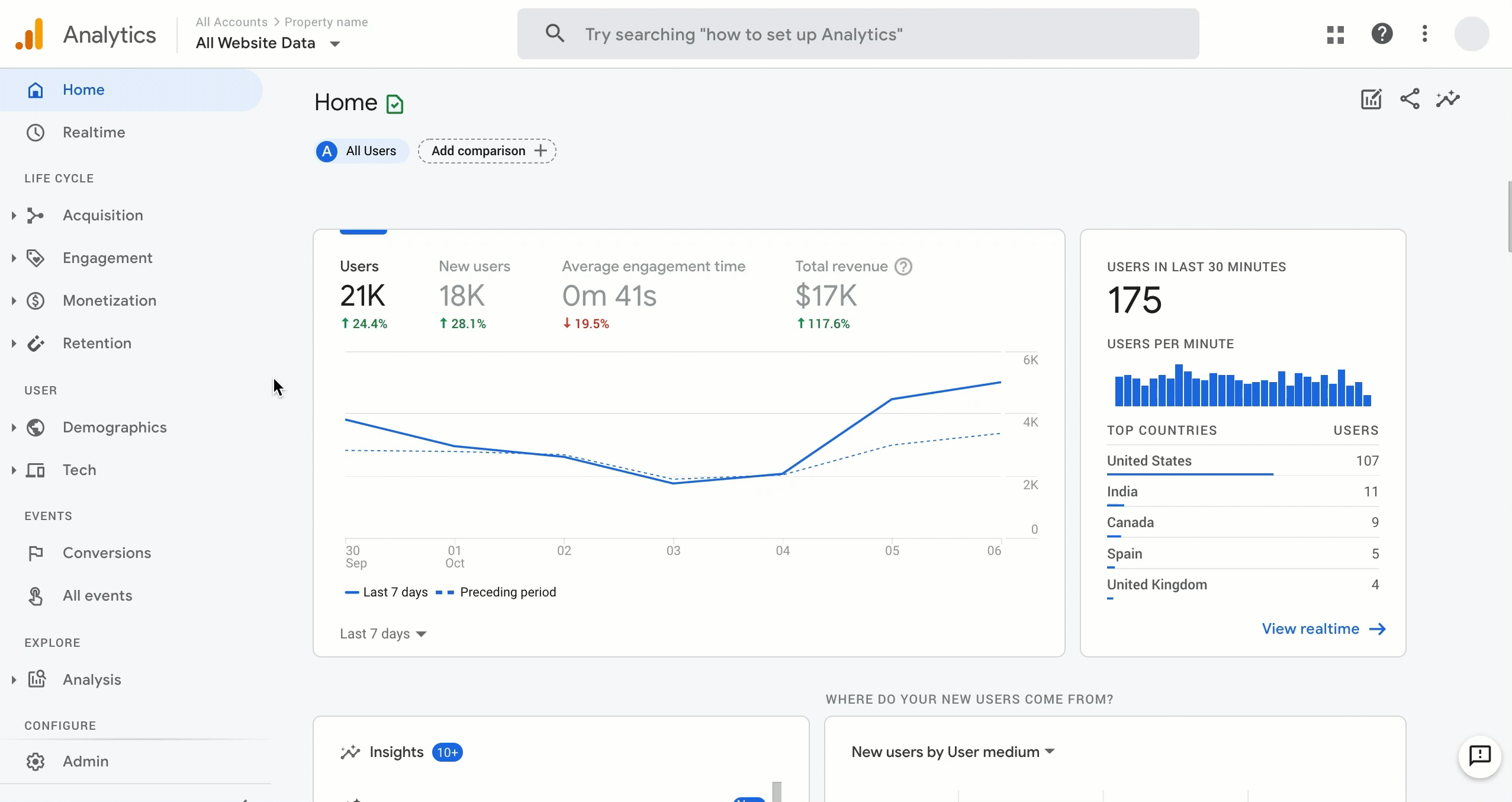Data is the fundamental foundation from which digital marketers build their strategies. Currently, many make use of Google Analytics for data analysis and more. However, with the introduction of Google Analytics 4, it is important to understand what changes will be taking place in how we are able and encouraged to analyse data in the future.
This new model for data collection will affect everything from paid search, SEO and e-commerce, so we’ll look at how Google has predicted user trends to design an analytics tool for the future consumer.
Universal analytics vs. Google Analytics 4
The change from Universal Analytics to Google Analytics 4 is not a simple upgrade but a complete overhaul of the current system. Essentially it moves its focus from webpage session tracking to event tracking. The major advantage is that by tracking individual events such as video views and page downloads, tracking can be done consistently and equally across all platforms and devices not just webpages.
More holistic data collection allows for flexibility when it comes to increased data privacy restrictions as well as the changing user behaviour patterns seen by many online businesses. An events driven approach means that the increasingly diluted user journey, which often involves numerous platforms and devices, can be made more visible to marketers. This visibility will be achieved by features such as automated tracking and the enhanced responsibility given to AI to provide useful recommendations.
So how will this new approach affect digital marketers day-to-day?
Paid search
Traditional data collection on user behaviour has seen many changes in accessibility, with more plans by major search engines and social media sites set to make personal data more private. Whilst this is positive news for the user, it makes paid search a more challenging and unpredictable task. With Google Analytics 4 aiming to bridge the gap between tracking across apps, mobiles, webpages, social platforms, videos and more, there is potential to look for new ways of understanding users.
Tracking individual events allows digital marketers to build a more complete and relevant picture of the user’s path to purchase. By assessing how users find brand content and how they choose to engage with it across all outputs, digital marketers can better compare their effectiveness with relative equality. Only time and personal experience will tell which analytics version best suits businesses paid search needs. Still, the designers of Google Analytics 4 seem to be predicting the future behaviour of customers to improve the success of digital channels.

SEO
Google Analytics 4 offers a more granular approach to data analysis than Universal Analytics. By employing a more AI-centric approach to data analysis, users of Google Analytics 4 will have access to in-depth recommendations based on a wealth of new data not previously available through Universal Analytics. Whilst automated tracking is a given, GTM will still be available for those looking for more customisable approaches.
Tracking activity accurately on a wider variety of devices and platforms will allow businesses to look at optimisations more granularly. Content will also be able to be tailored more effectively to each platform as a user interaction can be broken down more granularly within the context of a wider tracking range across devices. The Google Analytics 4 system looks set to improve SEO capabilities.
E-Commerce
Since the COVID-19 pandemic, e-commerce has experienced rapid growth, and so have how consumers shop online. Changing consumer habits have been difficult to keep track of since devices, platforms and content allow a multitude of ways for users to shop – even videos can be made shoppable in 2021.
Google Analytics 4 aims to bring businesses up-to-date with reduced reliance on web tracking and provide data that covers the increasing ways in which consumers shop. Whilst the path to purchase can seem convoluted at times, by allowing marketers to track a wider range of user interactions, Google Analytics 4 should theoretically provide a clearer picture of how brands look from a future user perspective.
Conclusion
There are many advantages to using an analysis tool that can provide data from a wide range of platforms. With a strong emphasis on how users interact with brands, Google Analytics 4 could be a useful upgrade from Universal Analytics. However, each business has different requirements, and the increased reliance on AI and modelling over cookies and identifiers may not appeal to all. However, with new data privacy laws, brands must adapt to new data collection and analysis methods. As long as user behaviour continues in its non-linear trajectory, this new tool from Google seems to be fully equipped to provide an approach that mirrors the consumer’s intent.
——————————
Written and researched by Paige Elford, Digital Marketing Graduate








